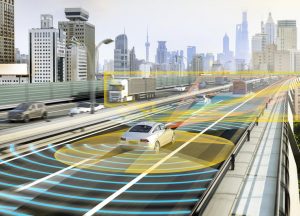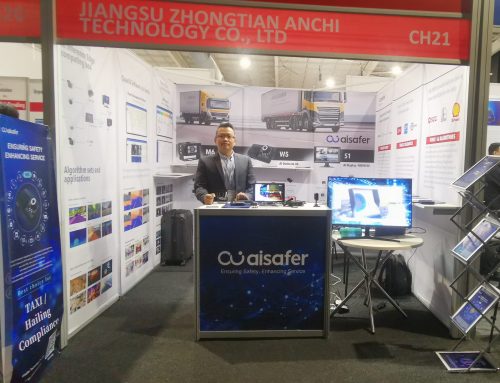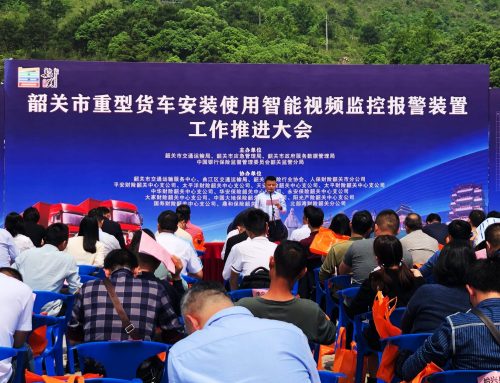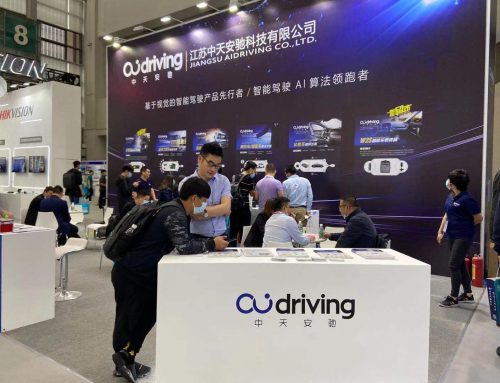
In 2014, Mobileye was a standout in the ADAS ecosystem, and with its dedicated ADAS chip EyeQ, it became the supplier of many global auto companies such as BMW, GM, Volvo, Hyundai and so on.
A year later, many independent brand ADAS providers emerged in the Chinese market, and mid-level cars price within 200,000 RMB began to equip with ADAS.
Most ADAS manufacturers start with aftermarket, because many aftermarket automotive electronic systems do not need to meet all automotive regulations and only need to implement functions, so domestic independent brand companies have chosen aftermarket ADAS as an entry point.
AIDriving started from the smartphone applications, realize ADAS functions based on smartphone camera and system. The smartphone application performed intelligent image recognition and analysis to assist driver. Later, considering that the long time use of smartphones will cause overheating and frequent phone disturbances, he abandoned this path and chose to start with an intelligent hardware system.
AIDriving has been focusing on the ADAS (advanced driver assistance system) technology. Founder and CEO Justin Xu graduated from Tongji University. He was engaged in chip research and development in Lenovo and US-funded companies before 2013, and then turned to enterprise management and operation.
At the beginning of its establishment, AIDriving was favored by the capital market, and soon received an investment of tens of millions of RMB from Wuyue Capital. In the field of ADAS, regarding the advantages of AIDriving, Justin Xu said: “First, he conducted research and development tests on the driving habits of the Chinese and the complex domestic road environment. The system is more user-friendly and has started mass production and sales; second AIDriving team has 8 years of research and development, 10 invention patents, and has also established a huge and constantly updated algorithm database, of which the ADAS alarm system accuracy rate is as high as 99%.
From smartphone version of ADAS, all-in-one ADAS terminal to autonomous driving, how does AIDriving dig into intelligent transportation.
The ADAS uses sensors such as speed, and acceleration sensor on the car to sense the surrounding environment at any time during driving, collect data, and identify, detect, and track static and dynamic objects. The map data of the navigator performs systematic calculation and analysis, so that the driver is aware of possible dangers in advance, and effectively increases the comfort and safety of car driving. With the rapid growth of the ADAS market in recent years, the system has gradually moved from the high-end market to the mid-end market. The improved new sensor technology is also creating new opportunities and strategies for system deployment.
Based on the ADAS, AIDriving monitors the front road conditions through the camera, provides pedestrian detection, forward collision and lane departure reminder functions, and through driving behavior data analysis, opens the business model of technology insurance and technology logistics management.
Justin Xu said that the company currently has two products, one is ADAS+fatigue driving monitoring, and the other is the ADAS+fatigue driving monitoring product integrated into the Beidou Ministry standard. It has reached cooperation with some domestic commercial vehicle OEMs.
In view of the technical advantages, Justin Xu said that all algorithms can be run on the same embedded device. During front vehicle detection, there are self-developed algorithms for ranging, relative speed, collision time, etc. When face detection, facial features can be accurately recognized and define posture.
In addition, after research and development by more than 100 engineers in the team and environmental testing in 17 provinces and cities, tens of billions of kilometers of mileage data have been accumulated, which makes the data of massive samples updated quickly, Xu Yixin then added.
The vehicle is equipped with a large number of cameras to collect road data. Therefore, the storage of data volume, the labeling of the remote center, and the training and optimization of the data after the labeling have always been the places where ADAS companies need to break through.
In this regard, Justin Xu said that the company’s vehicle terminal implements an algorithm locally, which can automatically filter data, only store valuable warning videos and pictures, and comes with an SD card, which can be equipped with an HDD.
Among them, the Calibration of the remote center is officially called the equipment label, which is used to measure the width of the vehicle, the installation height, and the position of the camera. First, use a professional calibration device to calibrate during installation; secondly, the platform side automatically judges the calibration accuracy during the operation of the equipment. If an abnormal situation occurs, manually confirm and correct it to ensure the accuracy of the alarm.
The main source of current data is terminal devices connected to the platform, which generates millions of kilometers of data every day. More than that, the data is divided into positive samples and negative samples. Generally, the alarm data on the platform is marked as a negative sample. At the same time, the terminal passes the uncertain samples to the data server. Then improve the detection rate of the model.
Compared with the traditional method, upload all the original data, and then use the supercomputer to filter. AIDriving uses the terminal’s computing power to complete the work of the supercomputer. Its data processing system “SMARTER” uses distributed computing to process billions of pictures into Hundreds of thousands of samples to reduce the computing pressure of the GPU cluster and directly obtain the final selected data.
Landed commercial vehicle market
According to specific data, the penetration rate of ADAS market in 2015 was 15%. Judging from the industry growth cycle, China’s ADAS industry is still in the transition stage from the introduction period to the growth period, coupled with the continuous introduction of ADAS functions by car manufacturers, while superimposing the government regulations , ADAS market will accelerate growth. It is estimated that the scale of China’s ADAS market will reach 54.2 billion RMB in 2019, with a growth rate of 45.7%. In 2020, the domestic ADAS market will occupy 30% of the global share.
Since the Ministry of Communications introduced new regulations in March last year: passengers operating above 9 meters must install LEW (lane departure warning system) and AEB (automatic braking system), with a transition period of 13 months, which will be extended to the field of freight cars in the future. Many ADAS companies have chosen to land on the commercial vehicle market, and AIDriving is no exception.
In the automotive market, ADAS systems are divided into two types: front-mounted and rear-mounted. “Front loading” is specially provided by the car manufacturer, while “back loading” is sold and installed through channels.
AIdriving mainly cuts into the aftermarket. Justin Xu explained that the frontwear market will always exist. The aftermarket should be the most prosperous period in recent years, and the time window will not be very long. But in recent years, the aftermarket will still be huge.
ADAS moves towards autonomous driving
When talking about how to transform from ADAS into an autonomous driving company, Justin Xu told that it is expected that true full-scenario automatic driving will be realized after many years. The process is long and cannot be applied until the final stage is mature.
Reshaping a scene or even using a scene can make the autopilot scheme land faster. So at this stage, the team will continue to mass-produce the ADAS system and optimize it continuously, as follows:
In terms of hardware, the reliability of a single sensor needs to be improved. Vision, millimeter wave radar, and lidar have certain limitations in certain scenarios. For example, there are inherent technical bottlenecks that cannot meet the requirements of all weather and all working conditions. Therefore, many suppliers choose to cooperate with other sensors such as millimeter wave to launch a multi-sensor fusion solution.
Perceptual links, algorithms, computer vision accuracy, and multi-sensor data fusion methods all require a lot of work to study.
In decision-making and control, Zhongtian Anchi is currently developing lane keeping assist (LKA) based on lane departure warning (LDW); it is implemented on the basis of front vehicle anti-collision warning (FCW) and pedestrian anti-collision warning (PCW) Automatic emergency braking (AEB).
In addition, in terms of data, AIDriving and third parties cooperate to develop high-precision maps and driver behavior models to provide data services for autonomous vehicles, and eventually become a part of the autonomous driving field.
Justin Xu revealed that he has reached cooperation with some graphic vendors to provide dynamic updates to the graphic vendors. The company mainly completes the cleaning and calibration of the data.
Finally, the development of the ADAS industry in full swing now reflects the increasingly electrified and continuously increasing functions of vehicles. The journey towards fully automated driving is accelerating, and the development of the automotive industry is about to reach the tipping point. Advanced visual sensors with functional safety will be the core of the future ADAS system, to achieve the “fusion” of sensors and other automotive technologies, and to ensure network security, will drive the automotive industry to quickly reach the tipping point of autonomous driving.





